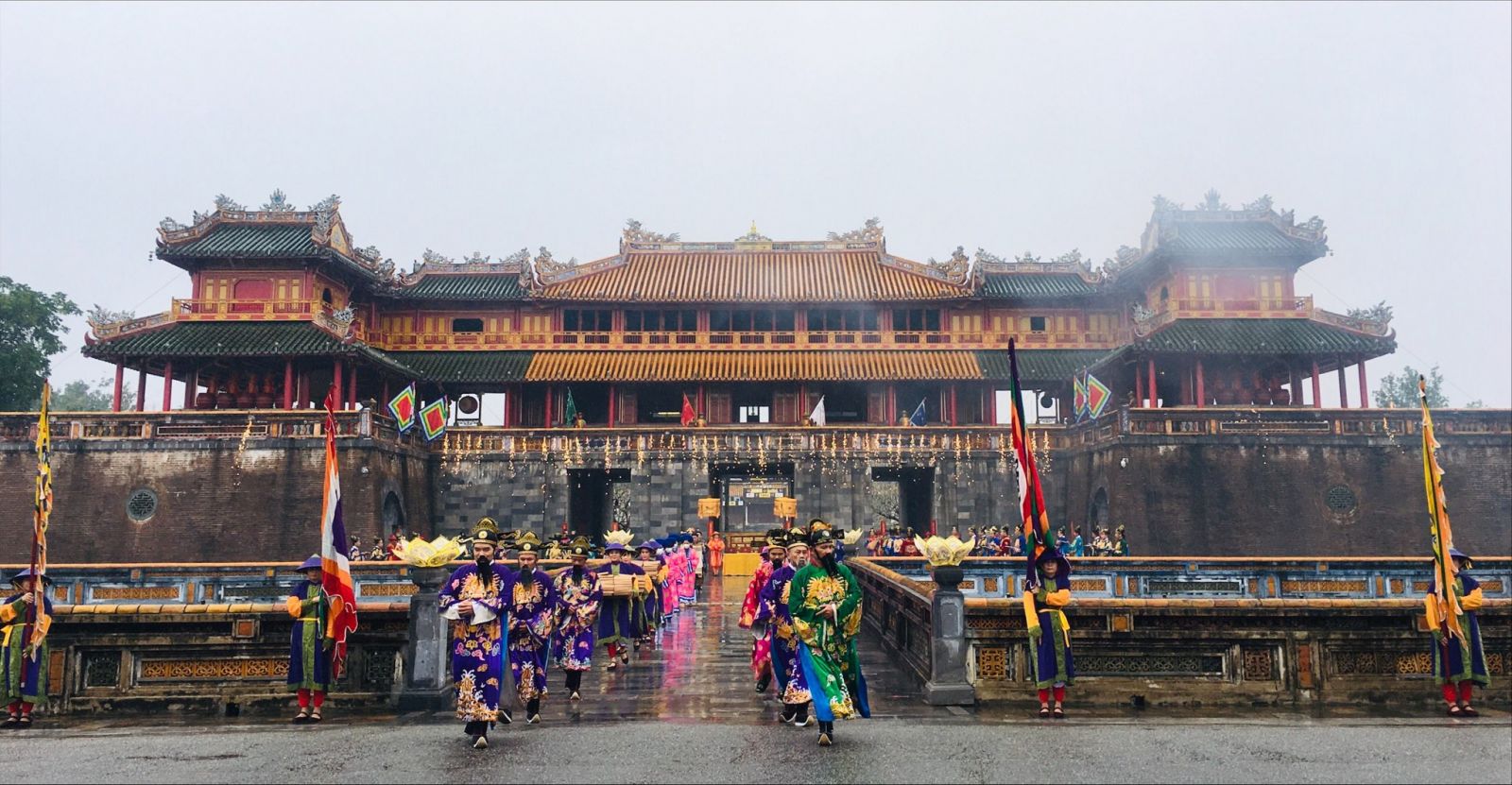
The Calendar Distribution Ceremony was recreated through the theatrical form at Noon Gate, Hue Citadel, on the morning of January 1, 2022. Photo: Q.T
After the Kham Thien Giam office finished editing the calendar, the calendar was presented to the Palace for the Royal Family, distributed to the mandarins in the Citadel and other localities, and also distributed among the people.
The Calendar Distribution Ceremony was initially held in the courtyard of Thai Hoa Palace. From 1841, under Emperor Minh Mang’s decree, the ceremony had taken place at Noon Gate since the calendar was not only used by the court but also given to the people.
Today's Calendar Distribution Ceremony is different from the past not only because it is a festival recreated after the Nguyen Dynasty ritual, but it is also considered the first festival in the Spring Festival from January to March, kickstarting Hue Festival 2022. This year, Hue Festival does not solely focus on art programs taking place in a few days but is held all year round.
Cultural and artistic activities, and folk and royal festivals are distributed throughout the year to meet the guests’ needs of visiting, exploring, and enjoying. After the Calendar Distribution Ceremony, also in this lunar December, the spring festival " Harmony of spring colors" continues with the Thuong Tieu ceremony (Erecting the Tet pole), signaling the time of the Tet holiday of the court.
At the beginning of the lunar new year, there are festivals of Huyen Tran Temple, Xa Tac sacrifice ritual, Hue Poetry Festival, and the highlight festival Hue – The Capital of Gastronomy in March in conjunction with the celebration of the liberation of Thua Thien Hue. After the spring festival are the festivals in summer, autumn, and winter.
Since the first time in 2000, Hue Festival has been regularly organized and alternates with Hue Traditional Craft Festival in even and odd years, respectively. It has been 15 years since Standing Deputy Prime Minister Nguyen Sinh Hung signed the Decision approving the project to build Hue into a festival city of national and international stature with Vietnamese characteristics.
For more than two decades, every passing Hue Festival brought exciting and impressionable activities and festivals that contributed to awakening and sublimating Hue traditional culture. Alongside it, however, were various concerns of financial issues, professionalism requirements, and technological requirements for the organization of this unique cultural event. In particular, a big question was that after Hue Festival, what would be left and what would be used to serve the needs of tourists on normal days?
The project “Hue – four seasons of festivals” that was initiated right after the 2018 Festival, was the answer. I remember Mr. Phan Ngoc Tho - the Standing Deputy Secretary of the Provincial Party Committee. When he was still in office as the Chairman of the Provincial People's Committee, he was very passionate about this breakthrough change.
According to Mr. Tho, the general principle of “Hue – four seasons of festivals” is organizing cultural activities, folk festivals, and newly introduced festivals that have community significance in a reasonable time frame. From there other community activities would be built and sequenced into this frame. Thus, several main cultural and artistic activities will be the “backbone” for the festival of each season.
The project is built with the aim of organizing a series of festivals distributed throughout the four seasons of the year to attract tourists and develop the socio-economy so that Hue is truly a typical festival city of Vietnam.
The COVID-19 pandemic has disrupted but could not stop the "Harmony of spring colors" festival and the four seasons of festivals in Hue. The next concern is the vision and the proactive actions of the owner of Hue Festival to elevate it into an attractive tourism brand and the pride of the Huong Ngu region.
By Dan Duy